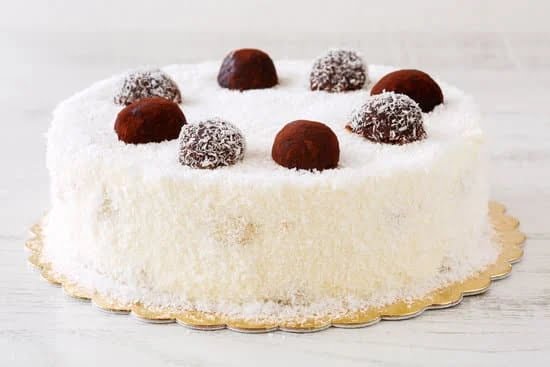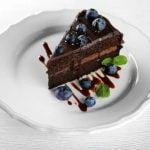The art of cake decoration with an icing bag is a versatile and beautiful way to elevate any homemade or store-bought cake. With just a few essential tools and materials, you can transform a plain cake into a masterpiece that will impress your family, friends, and guests.
Learning how to properly decorate a cake with an icing bag is not only important for creating visually appealing designs, but it also allows you to express your creativity and add a personal touch to your baked creations.
Using an icing bag gives you the ability to create intricate designs, add depth and texture, and customize your cake in ways that are simply not possible with other decorating techniques. Whether you want to create delicate borders, vibrant flowers, or elegant writing, the precision and control provided by an icing bag allow you to achieve professional-looking results.
In the following sections of this article, we will guide you through everything you need to know about decorating cakes with an icing bag. We will start by discussing the essential tools and materials needed for cake decoration. Then, we will walk you through step-by-step instructions on preparing the icing for decorating and getting your cake ready for the design process.
We will also cover basic techniques for mastering icing bag control and progress to more intricate designs using piping tips. Additionally, we will provide troubleshooting tips for common issues that may arise during the decoration process.
With practice and patience, you will soon be able to unleash your creativity and transform ordinary cakes into works of edible art using an icing bag. Let’s dive into the world of cake decoration together.
The Essential Tools and Materials for Cake Decoration
Cake decoration is an art form that requires the proper tools and materials to achieve beautiful and professional-looking results. Here is a detailed list of essential tools that every cake decorator should have:
- Icing Bags: These are the foundation of cake decoration. Icing bags come in various sizes and can be made from different materials such as disposable plastic or reusable fabric. It’s important to choose a size and material that you are comfortable with and suits your decorating needs.
- Tips: Decorating tips are the attachments that go on the end of the icing bag to create different designs. There are hundreds of tips available, but some basic ones every decorator should have include round tips for creating lines and dots, star tips for making rosettes and shells, and leaf tips for creating foliage.
- Couplers: Couplers allow you to easily switch between different tips without changing the icing bag. They consist of a base that screws onto the bag and a ring that holds the tip in place. Using couplers saves time and makes it easier to experiment with different designs without needing multiple icing bags.
- Spatulas: Spatulas are necessary for spreading icing on cakes smoothly and evenly. An offset spatula is ideal for frosting the sides of a cake, while a straight spatula is better suited for smoothing out the top surface.
In addition to these tools, it’s important to have a variety of icings suitable for different designs. Some common types include buttercream (smooth or textured), royal icing (hardens when dry), ganache (rich chocolate icing), and fondant (pliable dough-like icing).
| Tools | Description |
|---|---|
| Icing Bags | The foundation tool for cake decoration available in various sizes and materials. |
| Tips | Attachments that create different designs on cakes when attached to the icing bags. Basic tips include round, star, and leaf tips. |
| Couplers | Allows for easy switching between different tips without changing the icing bag. |
| Spatulas | Necessary for spreading icing smoothly and evenly on cakes. Offset spatulas are ideal for frosting the sides, while straight spatulas are suited for smoothing the top surface. |
Having these essential tools and materials in your cake decorating arsenal will set you up for success. Each tool serves a specific purpose and contributes to creating stunning cake designs.
Preparing the Icing for Decorating
When it comes to cake decoration, the icing is a crucial element that can make or break the design. Preparing the icing properly is essential for achieving smooth and consistent results. Follow these steps to ensure your icing is ready for decorating:
- Gather the Ingredients: To make smooth and consistent icing, you will need confectioners’ sugar, unsalted butter, vanilla extract, and a liquid such as milk or water. The exact measurements may vary depending on your recipe, so be sure to follow it carefully.
- Mixing the Ingredients: Start by sifting the confectioners’ sugar to remove any lumps. In a mixing bowl, cream the butter until it is light and fluffy. Then gradually add in the sifted sugar, beating well after each addition. This process helps to incorporate air into the mixture, resulting in a lighter texture.
- Adjusting Consistency: Depending on your design needs, you may need different consistencies of icing. You can adjust the consistency by adding small amounts of liquid (milk or water) to thin out the icing or more confectioners’ sugar to thicken it. It’s important to add liquid or sugar slowly and mix well after each addition until you achieve your desired consistency.
Different designs require different consistencies of icing. Here are three main types of consistencies along with their recommended uses:
- Firm Consistency: This type of icing holds its shape well and is ideal for creating intricate details and decorations such as flowers and borders.
- Middle Consistency: Middle consistency icing is versatile and can be used for piping outlines, lettering, and basic decorations.
- Thin Consistency: This consistency is ideal for covering the cake smoothly or creating a glaze-like effect.
By preparing your icing properly and adjusting its consistency accordingly, you will have better control over your designs and achieve professional-looking results. Experiment with different consistencies to find what works best for your specific cake decoration projects.
Preparing the Cake for Decoration
Before you begin decorating your cake with an icing bag, it is important to properly prepare the cake itself. This step is crucial as it provides a clean canvas for your decorative designs and ensures that the icing adheres well to the cake’s surface. Here are some tips on how to prepare your cake for decoration.
Firstly, it is important to level your cake. This means removing any uneven or domed areas from the top of the cake so that it has a flat surface. You can do this by using a serrated knife or a cake leveler. By leveling the cake, you create a solid foundation for your decorations and prevent any lopsidedness in the final result.
Next, consider crumb coating your cake. Applying a thin layer of frosting, often referred to as a crumb coat, helps to trap any loose crumbs on the surface of the cake and create a smooth base for your final layer of icing. To crumb coat your cake, simply spread a thin layer of frosting over its entire surface using an offset spatula or a bench scraper.
After applying the crumb coat, it is essential to chill your cake before proceeding with further decoration. Placing the cake in the refrigerator for about 20-30 minutes helps firm up the frosting and prevent it from smearing or melting when you add additional layers or decorations. Chilling also allows time for any excess moisture in the frosting to evaporate, resulting in a better overall texture.
By properly preparing your cake through leveling, crumb coating, and chilling, you create a sturdy foundation for your icing and ensure that it will adhere smoothly and evenly to your cake’s surface. Taking these extra steps will not only enhance the visual appeal of your decorated creation but also provide stability while handling and transporting it.
Mastering Basic Icing Bag Techniques
Decorating a cake with an icing bag can seem daunting for beginners, but with some practice and patience, anyone can master the basic techniques. In this section, we will go through the steps to properly hold and control an icing bag, as well as practice exercises for mastering basic techniques such as lines, dots, shells, and rosettes.
To start, it is important to hold the icing bag correctly to have better control over the icing flow. Hold the bag near the top with one hand while using your other hand to guide and apply pressure. The hand holding the bag should act as a lever while the guiding hand directs the flow of icing. Practice squeezing gently at first to get a feel for controlling the amount of icing being dispensed.
Lines are one of the simplest techniques that can add elegance to any cake design. To create straight lines, hold the bag at about a 45-degree angle and apply even pressure while moving your hand in a smooth motion. Dots can easily be created by starting with light pressure on the bag until enough icing has been expelled.
Shells are another versatile technique that can add texture and dimension to your cake decoration. Hold your bag at a 45-degree angle and move it in a half-circle motion while applying consistent pressure. For rosettes, start by creating a small mound of icing in one spot and then rotate your wrist while simultaneously applying pressure to create a beautiful floral shape.
By practicing these basic techniques, you will gain confidence in working with an icing bag and be better equipped to take on more complex designs. Remember that consistency in practicing is key – don’t be discouraged if your first attempts do not turn out perfectly. With time and effort, you will become proficient in these fundamental skills.
| Technique | Description |
|---|---|
| Lines | Create straight lines by holding the bag at a 45-degree angle and applying even pressure while moving your hand in a smooth motion. |
| Dots | Start with light pressure on the bag until enough icing has been expelled to create small dots. |
| Shells | Hold the bag at a 45-degree angle and move it in a half-circle motion while applying consistent pressure to create textured shells. |
| Rosettes | Create floral shapes by starting with a small mound of icing, then rotate your wrist while simultaneously applying pressure. |
Creating Intricate Designs with Piping Tips
Overview of different types of piping tips and their effects
When it comes to creating intricate designs on a cake, the choice of piping tips is crucial. Piping tips come in various shapes and sizes, each with its own unique effect. The most commonly used piping tip is the round tip, which creates smooth lines, dots, and writing on the cake. The star tip, on the other hand, can create a range of designs from shells to rosettes with its ridged edges.
For more intricate details, petal tips can be used to create delicate flowers and ruffles. Leaf tips are great for adding foliage or creating textured designs like grass. It’s important to have a variety of piping tips in your collection to achieve different effects and styles.
Step-by-step tutorials for creating specific designs like borders, flowers, and writing
Now that you have an understanding of the different types of piping tips, let’s dive into some step-by-step tutorials for creating specific designs using these tips. For borders, a simple but effective technique is the shell border. Start by holding your icing bag at a 45-degree angle and apply steady pressure while moving your hand in a wave-like motion. This will create beautiful shell-shaped decorations around the edge of your cake.
To create flowers using petal tips, start by holding the wider part of the tip closer to the surface of the cake with the narrower part facing up. Apply pressure to form a base and gradually lift it up while releasing pressure to create individual petals. Repeat this process around the center to form a blooming flower.
Writing on cakes can be intimidating but with practice it becomes easier. Using a round tip or writing tip, hold your icing bag at a 90-degree angle above the surface of the cake and apply gentle but consistent pressure while guiding it along to form letters or words.
Enhancing designs with additional techniques
While piping tips can create stunning designs on their own, combining them with other techniques can take your cake decoration to the next level. One technique to enhance your designs is to add dimension through ruffles, pleats, and piped lace. With a petal tip or ribbon tip, pipe continuous loops onto the cake surface to create ruffles or pleats. For piped lace, use a small round tip and create intricate lace-like patterns by piping delicate lines and shapes.
Using multiple colors can also create visually interesting effects on your cake. You can achieve this by filling different sections of your icing bag with different colored icings and applying gentle pressure when piping to get a beautiful gradient effect or even multi-colored flowers.
By experimenting with different combinations of tips, techniques, and colors, you can truly showcase your creativity and create intricate designs that will impress everyone who sees your beautifully decorated cake.
Adding Depth and Texture to Your Cake
Adding depth and texture to a cake can elevate its overall appearance and make it more visually appealing. By incorporating techniques such as ruffles, pleats, and piped lace, you can create intricate designs that will impress your guests. Additionally, using multiple colors can add dimension and make the cake more visually interesting. In this section, we will explore these techniques in detail.
Creating Dimension with Ruffles
One way to add depth to your cake is by creating ruffles using an icing bag. To achieve this effect, fill your icing bag fitted with a petal tip with the desired colored icing. Starting at the base of the cake, hold the piping bag at a 45-degree angle and apply gentle pressure as you move in a back-and-forth motion. This will create beautiful ruffled layers that cascade down the sides of the cake.
Pleats: An Elegant Touch
Pleats are another technique that can be used to add elegance and texture to your cake decoration. To create pleats, use a flat tip or star tip on your icing bag. Hold the bag at a 90-degree angle against the side of the cake and pipe vertical lines close together. Then, use a spatula or knife to gently press down on each line, creating small indentations or pleats.
Piped Lace for Delicate Detailing
If you want to add intricate detailing to your cake, piped lace is an excellent technique to try. Using a small round tip on your icing bag, carefully pipe delicate lace patterns onto parchment paper or wax paper. Once they have dried completely, gently peel them off and place them strategically on the sides or top of your cake for an elegant touch.
Using Multiple Colors for Visual Interest
Incorporating multiple colors into your cake decoration can bring vibrancy and visual interest to the design. One way to do this is by using multiple icing bags fitted with different colored icings and piping them side by side. This creates a beautiful two-tone effect. Another technique is blending colors on the same bag, allowing them to form unique patterns as you pipe.
By utilizing these techniques and experimenting with different designs, you can add depth and texture to your cake decoration, taking it to the next level of artistry. Remember, practice makes perfect, so don’t be discouraged if your first attempts are not flawless. With time and patience, you will develop the skills needed to create beautifully decorated cakes that are sure to impress.
Troubleshooting Common Icing Bag Issues
Decorating a cake with an icing bag can be a fun and rewarding experience, but it’s not without its challenges. Fortunately, many common icing bag issues have simple solutions that can help you achieve the beautiful results you desire. Here are some troubleshooting tips to overcome these obstacles:
- Clogged Tips: One of the most frustrating problems when using an icing bag is when the tip becomes clogged, resulting in uneven or blocked flow of frosting. To prevent this issue, make sure to thoroughly clean your piping tips after each use and remove any excess frosting or debris that may be trapped inside.
If your tip still becomes clogged during decorating, try running it under hot water or using a toothpick to gently clear any blockages. - Inconsistent Frosting: Another common problem is when your frosting consistency varies throughout the decorating process. This can cause difficulties in achieving smooth lines and shapes. To maintain consistent frosting, periodically knead your icing bag gently while applying pressure to ensure a uniform texture. If you’re using multiple colors of frosting, make sure they all have the same consistency to avoid uneven application.
- Air Bubbles: When air bubbles get trapped in your icing as you pipe it onto the cake, it can result in unsightly craters or gaps. To minimize air bubbles, tap your filled icing bag lightly against a countertop before piping to release any trapped air. Additionally, squeeze out any air pockets from the top of the icing bag before beginning and make sure to apply consistent pressure when piping.
By implementing these troubleshooting tips and techniques into your cake decoration process, you’ll be better equipped to handle common issues that may arise when using an icing bag. Remember that practice makes perfect – don’t get discouraged if you encounter challenges along the way. With patience and persistence, you’ll soon master the art of cake decoration with an icing bag and achieve stunning results every time.
Finalizing Your Cake Decoration
After all the hard work you have put into decorating your cake with an icing bag, it’s time to add those final touches that will truly make it shine. In this section, we will explore some tips and suggestions for finalizing your cake decoration and making it look even more impressive.
One way to elevate your cake decoration is by adding edible embellishments. These could be anything from fondant or gum paste decorations to fresh fruits or flowers. Edible embellishments not only enhance the visual appeal of the cake but also provide added texture and flavor. Consider using these embellishments strategically to create a focal point or accentuate certain design elements on your cake.
In addition to edible embellishments, dusting powders can also be used to add a touch of elegance and sophistication to your cake. These powders come in a variety of colors and finishes, such as shimmer or metallic, and can be brushed onto the surface of the cake or specific decorations. Dusting powders can help highlight certain details or create a subtle glow on the overall design.
Once your cake is fully decorated, it’s important to think about how you will display and preserve it. Depending on the occasion, you may want to invest in a beautiful cake stand or platter that complements the design of your cake. It’s also essential to consider factors such as temperature and humidity when displaying your decorated cakes, as these can affect the stability of the icing.
By adding these finishing touches, you can take your beautifully decorated cake with an icing bag to another level. Remember that every detail matters when it comes to cake decoration, so don’t shy away from experimenting with different techniques and ideas until you find a style that resonates with your creativity. Enjoy the process, have fun, and most importantly, savor every moment as you unveil your masterpiece.
Conclusion
In conclusion, learning how to decorate a cake with an icing bag opens up a world of creativity and beauty in the realm of cake decoration. Throughout this blog post, we have explored the essential tools and materials needed for cake decoration, as well as the step-by-step process of preparing both the icing and the cake itself.
We have also delved into mastering basic techniques with the icing bag, creating intricate designs with piping tips, adding depth and texture to our cakes, and troubleshooting common issues that may arise.
With all these skills and techniques at your disposal, it is time to unleash your creativity and let your imagination run wild. The icing bag allows you to create unique and stunning designs that will impress any audience. Remember to experiment, try new things, and develop your personal style in cake decoration.
Not only is decorating a cake with an icing bag a form of artistry, but it is also an enjoyable and satisfying process. Take joy in seeing your vision come to life as you pipe beautiful borders, flowers, and writings onto your cakes. Embrace mistakes as opportunities for growth and improvement. And most importantly, have fun along the way.
So go ahead and utilize everything you have learned in this blog post to create masterpieces on your cakes. Whether it’s for special occasions or simply adding a touch of beauty to everyday life, the art of decorating with an icing bag will surely bring delight to both yourself and those who get to enjoy your delectable creations.
Frequently Asked Questions
How do you prep an icing bag?
To prep an icing bag, start by choosing the right size of the bag for your needs. Then, snip off a small part of the bag’s tip or fit it with a piping tip if desired. Next, fold down the top half of the bag just like you would do with a cuff on a shirt.
This will create stability and make it easier to fill the bag without making a mess. Place the folded end into a tall glass or container, opening it up so you have both hands free for filling. Lastly, using a spatula or spoon, carefully transfer your desired icing into the bag without overfilling it.
How do you fill an icing bag easily?
Filling an icing bag easily requires some basic steps. First, fold down or cuff the top half of the bag to create stability as mentioned earlier. Then secure your chosen piping tip onto the cut end of the bag if you haven’t already done so before prepping.
Hold open the bag with one hand and use a spatula or spoon to scoop your prepared icing into the bag, taking care not to overfill it as this can lead to messy mishaps while piping later on. Once filled to your desired amount, gently squeeze and twist the top of the filled portion of the bag to create pressure and push out any air bubbles that may have formed during filling.
How do you transfer buttercream to a piping bag?
Transferring buttercream to a piping bag is relatively simple once you have prepped both your buttercream and icing bag properly. Begin by placing your chosen piping tip at one end of the icing bag if it isn’t already attached from prepping earlier. Using a spatula or spoon, scoop up an appropriate amount of buttercream from your prepared batch and insert it into one side of the piping bag at a time.
Take care not to overfill and leave enough room for maneuverability while piping later on. Repeat this process until all desired buttercream is transferred into the bag without overstuffing. Once filled, twist and seal the top of the bag to ensure the buttercream doesn’t squeeze out from the top while piping.

Welcome to our cake decorating blog! My name is Destiny Flores, and I am the proud owner of a cake decorating business named Cake Karma. Our mission is to provide delicious, beautiful cakes for all occasions. We specialize in creating custom cakes that are tailored specifically to each customer’s individual needs and tastes.





